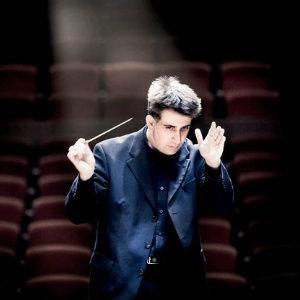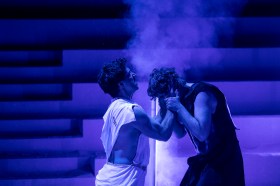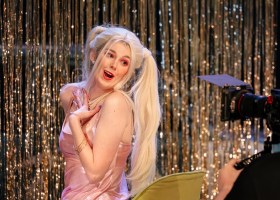First performed in 1874, it demands a huge double choir, four excellent soloists and a full Romantic orchestra with supplementary brass. It is technically a setting of the Roman Catholic Requiem mass, but is far more than that in weight and size. From a historical perspective it must be considered in context with the other heavyweight Requiems – the Bach, Berlioz, and Mozart settings, and the Rossini Stabat Mater. There are hints of Verdi’s Aida and his Don Carlos present in the work as well.
Dr Milton’s energetic, passionate yet precisely controlled conducting brought forth some magnificent ensemble playing from the Willoughby Symphony Orchestra; fiery and tumultuous where required and in other passages lyrical and pleading. Extra trumpets were positioned stage left in the audience to provide a call to judgement in the ‘Tuba Mirum’. (The combined brass and choir in that section are some of the loudest unamplified music written). This was in conjunction with the splendid double choir under the direction of Dr Sarah Penicka-Smith that provided a glorious sea of flowing sound, which in some sections crashed and volcanically erupted , in others soulfully lamented .The full throttle male choir in the ‘Rex Tremendae’ created a sense of oppressive unworthiness before the King of Tremendous Majesty.
The whole work begins hushed, with a passionate plea for ‘eternal rest’. The joyful, short brassy ‘Sanctus’ after the ‘ Offertorio’, scored for double choir, is a complicated eight-part, dance-like fugue, very close in musical development to Bach’s B Minor Mass and Mozart’s Requiem, and was thrillingly performed. After the ‘Sanctus’, the ‘Agnus Dei’ humbly requests the grace of the Lamb of God. This is followed by the ‘Lux Aeterna’ that starts with high strings and soprano, broadens to low brass and the bass baritone and develops to a difficult unaccompanied section.
The team work of the four soloists was excellent. All four were glorious in their phrasing, quality of voice and feeling for the words. Soprano Sarah Ann Walker, making her debut with the Willoughby Symphony, wore a heavy black Victorian-style dress with white detail in the bodice. She brought a marvellous soaring feel to the work, especially in the ‘Agnus Dei’ and the final ‘Libera me’, a prayer for deliverance from eternal death.
Mezzo–soprano Anna Yun wore an elegant black ball gown with red overlay and performed magnificently. The duets and quartets were splendid, and she was tremendous in the ‘Libera Scriptus’.
Tenor David Woodward was magnificent. In particular the solo ‘Ingemisco’, with featured haunting oboe as part of the ‘Sequence’ in Act 1, was hauntingly beautiful and radiated tentative hope for the sinner who craves God’s mercy.
Bass baritone soloist James Martin was also superb; his ‘Mors, Mors’ in Act 1 for the ‘Mors Stupebit’ causing goose bumps, and his solo in the ‘Confutatis’ also excellent.
Overall, this was a passionate, stirring performance. Added drama and excitement was created as one of the choir members collapsed and had to be helped out before the start of the ‘Sequence’ in Act 1, and Dr Milton, while conducting, dropped his baton in Act 2 (it was surreptitiously returned to him by Ms Yun). Hans Van Bulow said over a century ago that Verdi’s Requiem is ‘church music in the clothes of an opera’. Indeed!
Rating: 4 stars out of 5
Verdi’s Requiem
Willoughby Symphony Orchestra
Conducted by Dr Nicholas Milton
Sarah Ann Walker (Soprano), Anna Yun (Mezzo Soprano), David Woodward (Tenor) and James Martin (Bass Baritone)
Running time: just under two hours, including one interval
The Concourse, Chatswood
August 17 – 19






